| Ernst I | |||||
|---|---|---|---|---|---|
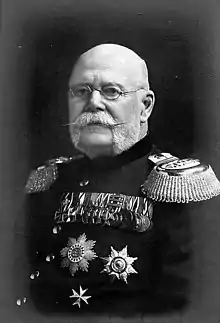 Photograph, c. 1870 | |||||
| Duke of Saxe-Altenburg | |||||
| Reign | 3 August 1853 – 7 February 1908 | ||||
| Predecessor | George | ||||
| Successor | Ernst II | ||||
| Born | 16 September 1826 Hildburghausen | ||||
| Died | 7 February 1908 (aged 81) Altenburg | ||||
| Spouse | |||||
| Issue | Marie, Princess Albert of Prussia | ||||
| |||||
| House | Wettin | ||||
| Father | Georg, Duke of Saxe-Altenburg | ||||
| Mother | Marie Luise of Mecklenburg-Schwerin | ||||
| Religion | Lutheranism | ||||
Ernst I, Duke of Saxe-Altenburg (German: Ernst I. Friedrich Paul Georg Nikolaus von Sachsen-Altenburg) (16 September 1826 in Hildburghausen – 7 February 1908 in Altenburg), was a duke of Saxe-Altenburg. He was the first son of Georg, Duke of Saxe-Altenburg and Marie Luise of Mecklenburg-Schwerin. In 1853 he succeeded his father as Duke of Saxe-Altenburg. He was of a retiring disposition and he took little active part in running the country. After a reign that lasted fifty five years, he died without a living direct male heir; because of this, he was succeeded by his nephew, Ernst.
Marriage
He was married in Dessau on 28 April 1853 to Agnes of Anhalt-Dessau (1824–1897). Agnes was a sister of Friedrich I, Duke of Anhalt.[1]
They had two children:
- Marie (b. Eisenberg, 2 August 1854 – d. Camenz, 8 October 1898), married on 19 April 1873 to Albrecht of Prussia.
- Georg (b. Altenburg, 1 February 1856 – d. Altenburg, 29 February 1856).
Honours and decorations
- German honours[2]
.svg.png.webp)
.svg.png.webp)
.svg.png.webp) Ernestine duchies:
Ernestine duchies:
- Joint Grand Master of the Saxe-Ernestine House Order, 3 August 1853
- Service Award Cross (25 years)
.svg.png.webp) Saxe-Weimar-Eisenach: Grand Cross of the White Falcon, 24 February 1849[3]
Saxe-Weimar-Eisenach: Grand Cross of the White Falcon, 24 February 1849[3].svg.png.webp) Saxony: Knight of the Rue Crown, 1848[4]
Saxony: Knight of the Rue Crown, 1848[4] Ascanian duchies: Grand Cross of Albert the Bear, 3 January 1852;[5] with Swords, 1872[6]
Ascanian duchies: Grand Cross of Albert the Bear, 3 January 1852;[5] with Swords, 1872[6].svg.png.webp) Baden:[7]
Baden:[7]
- Knight of the House Order of Fidelity, 1881
- Knight of the Order of Berthold the First, 1881
.svg.png.webp) Bavaria: Knight of St. Hubert, 1853[8]
Bavaria: Knight of St. Hubert, 1853[8]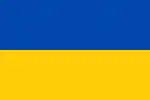 Brunswick: Grand Cross of Henry the Lion, with Swords, 1876[9]
Brunswick: Grand Cross of Henry the Lion, with Swords, 1876[9] Hanover:
Hanover:
- Knight of St. George, 1855[10]
- Grand Cross of the Royal Guelphic Order
- Grand Cross of the Order of Ernst August
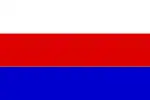 Schaumburg-Lippe:
Schaumburg-Lippe:
- Cross of Honour of the House Order of Lippe, 1st Class with Crown
- Military Merit Medal
 Mecklenburg:
Mecklenburg:
- Grand Cross of the Wendish Crown, with Collar
- Military Merit Cross, 2nd Class (Schwerin)
.svg.png.webp) Nassau Ducal Family: Knight of the Gold Lion of Nassau
Nassau Ducal Family: Knight of the Gold Lion of Nassau Oldenburg: Grand Cross of the Order of Duke Peter Friedrich Ludwig, with Golden Crown and Collar, 9 February 1852[11]
Oldenburg: Grand Cross of the Order of Duke Peter Friedrich Ludwig, with Golden Crown and Collar, 9 February 1852[11].svg.png.webp) Kingdom of Prussia:
Kingdom of Prussia:
- Knight of the Black Eagle, with Collar
- Knight of the Red Eagle, 1st Class
- Grand Commander of the Royal House Order of Hohenzollern
- Knight of Honour of the Johanniter Order
- Iron Cross, 2nd Class
 Württemberg: Grand Cross of the Württemberg Crown, 1868[12]
Württemberg: Grand Cross of the Württemberg Crown, 1868[12]
- Foreign honours[2]
 Austrian Empire: Grand Cross of St. Stephen, 1859[13]
Austrian Empire: Grand Cross of St. Stephen, 1859[13].svg.png.webp) Belgium: Grand Cordon of the Royal Order of Leopold
Belgium: Grand Cordon of the Royal Order of Leopold Denmark: Knight of the Elephant, 28 October 1882[14]
Denmark: Knight of the Elephant, 28 October 1882[14] Netherlands: Grand Cross of the Netherlands Lion
Netherlands: Grand Cross of the Netherlands Lion.svg.png.webp) Ottoman Empire: Order of Osmanieh, 1st Class in Diamonds
Ottoman Empire: Order of Osmanieh, 1st Class in Diamonds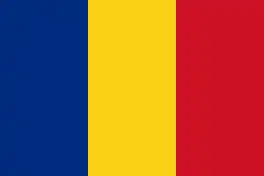 Kingdom of Romania: Grand Cross of the Star of Romania
Kingdom of Romania: Grand Cross of the Star of Romania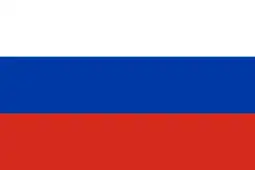 Russian Empire:
Russian Empire:
- Knight of St. Andrew
- Knight of St. George, 4th Class
.svg.png.webp) Kingdom of Serbia: Grand Cross of the Cross of Takovo
Kingdom of Serbia: Grand Cross of the Cross of Takovo.svg.png.webp)
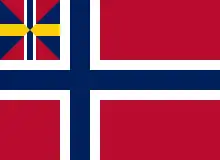 Sweden-Norway: Knight of the Seraphim, 24 February 1864[15]
Sweden-Norway: Knight of the Seraphim, 24 February 1864[15] Grand Duchy of Tuscany: Grand Cross of the Military Order of St. Stephen
Grand Duchy of Tuscany: Grand Cross of the Military Order of St. Stephen
Ancestry
References
Wikimedia Commons has media related to Ernest I, Duke of Saxe-Altenburg.
- ↑ "Duchess of Saxe-Altenburg Dead". The New York Times. 24 October 1897.
- 1 2 Staatshandbücher für das Herzogtum Sachsen-Altenburg (1902), "Genealogie des Herzoglichen Hauses Sachsen-Altenburg" pp. 1-2
- ↑ Staatshandbuch für das Großherzogtum Sachsen / Sachsen-Weimar-Eisenach (1851), "Großherzogliche Hausorden" p. 8 Archived 2020-07-06 at the Wayback Machine
- ↑ Staatshandbuch für den Freistaat Sachsen: 1865/66. Heinrich. 1866. p. 4.
- ↑ Hof- und Staats-Handbuch des Herzogtum Anhalt (1867) "Herzoglicher Haus-orden Albrecht des Bären" p. 17
- ↑ Hof- und Staats-Handbuch für des Herzogtum Anhalt (1883), "Herzoglicher Haus-Orden Albrecht des Bären" p. 15
- ↑ Hof- und Staats-Handbuch des Großherzogtum Baden (1896), "Großherzogliches Haus", pp. 62, 76
- ↑ Hof- und Staats-Handbuch des Königreich Bayern (1906), "Königliche Orden" p. 7
- ↑ Hof- und Staatshandbuch des Herzogtums Braunschweig für das Jahr 1897, "Herzogliche Orden Heinrich des Löwen" p. 10
- ↑ Staat Hannover (1865). Hof- und Staatshandbuch für das Königreich Hannover: 1865. Berenberg. p. 38.
- ↑ Hof- und Staatshandbuch des Großherzogtums Oldenburg: für das Jahr 1872/73, "Der Großherzogliche Haus-und Verdienst Orden" p. 30
- ↑ Hof- und Staats-Handbuch des Königreichs Württemberg (1873), "Königliche Orden", p. 32
- ↑ "A Szent István Rend tagjai" Archived 22 December 2010 at the Wayback Machine
- ↑ Jørgen Pedersen (2009). Riddere af Elefantordenen, 1559–2009 (in Danish). Syddansk Universitetsforlag. p. 469. ISBN 978-87-7674-434-2.
- ↑ Sveriges statskalender (in Swedish). 1905. p. 440. Retrieved 2018-01-06 – via runeberg.org.
This article is issued from Wikipedia. The text is licensed under Creative Commons - Attribution - Sharealike. Additional terms may apply for the media files.